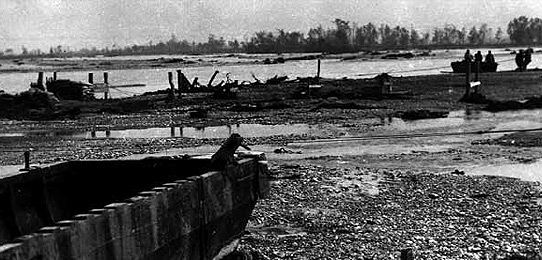You are here: HOME >> PLACES AND REGIONS >> CARD
Places and regions / The island of the dead / Moriago della battaglia
The great War

Outline of the place:
Common grief immediately after the conflict resulted in a small monument on a small lush island onto which many bodies were washed by the Piave current, so many as for the island to be called the “island of the dead”.
The island almost immediately became a place of pilgrimage in memory of the fallen soldiers and the actions performed by the Arditi (“the daring ones”) in that area of the river: it was transformed into a large park that today contains a number of monuments in its large central square as well as the “Sacello della Madonnina del Piave” (the votive chapel of Our Lady of Piave).
Not to be missed:
Fontigo di Sernaglia della Battaglia / Museum of the Great War.
A rich exhibition of the relics returned by the river or donated by a number of veterans living in the area can be visited at the Centro di Educazione Ambientale di Fontigo (Fontigo Centre for Environmental Education). The technological evolution of arms as well as the moving simplicity of personal objects found in the trenches at the time can be experienced.
Colfosco / Cannon cave.
During the last days of the conflict, the cave wherein visitors today can visit the Madonna held a cannon that made the construction of the bridges facing Nervesa very difficult. The Italian observatories failed to localize it and the cannon continued to be used undisturbed until the withdrawal.
Colfosco / Ruio di Villa Jacur.
The area surrounding Villa Jacur was a logistics key in the Austro-Hungarian offensive of June 1918: a bridge, the only one that withstood the Italian artillery, was thrown across the river and used by the imperial troops to withdraw during the Austro-Hungarian offensive of June 1918, in particular the 13th Schutzen Division, whose passing was commemorated with a plaque.
Colfosco / Monument to the Caimani del Piave (the caymans of the Piave).
In the central square of Falzè di Piave, an evocative group of bronzes portrays three “arditi” in an attacking stance, with the light arms typical of the special assault corps. The monument commemorates the action of the 27th of October 1918, that earned them the appellative of “caimani del Piave” (the caymans of the Piave).
Common grief immediately after the conflict resulted in a small monument on a small lush island onto which many bodies were washed by the Piave current, so many as for the island to be called the “island of the dead”.
The island almost immediately became a place of pilgrimage in memory of the fallen soldiers and the actions performed by the Arditi (“the daring ones”) in that area of the river: it was transformed into a large park that today contains a number of monuments in its large central square as well as the “Sacello della Madonnina del Piave” (the votive chapel of Our Lady of Piave).
Not to be missed:
Fontigo di Sernaglia della Battaglia / Museum of the Great War.
A rich exhibition of the relics returned by the river or donated by a number of veterans living in the area can be visited at the Centro di Educazione Ambientale di Fontigo (Fontigo Centre for Environmental Education). The technological evolution of arms as well as the moving simplicity of personal objects found in the trenches at the time can be experienced.
Colfosco / Cannon cave.
During the last days of the conflict, the cave wherein visitors today can visit the Madonna held a cannon that made the construction of the bridges facing Nervesa very difficult. The Italian observatories failed to localize it and the cannon continued to be used undisturbed until the withdrawal.
Colfosco / Ruio di Villa Jacur.
The area surrounding Villa Jacur was a logistics key in the Austro-Hungarian offensive of June 1918: a bridge, the only one that withstood the Italian artillery, was thrown across the river and used by the imperial troops to withdraw during the Austro-Hungarian offensive of June 1918, in particular the 13th Schutzen Division, whose passing was commemorated with a plaque.
Colfosco / Monument to the Caimani del Piave (the caymans of the Piave).
In the central square of Falzè di Piave, an evocative group of bronzes portrays three “arditi” in an attacking stance, with the light arms typical of the special assault corps. The monument commemorates the action of the 27th of October 1918, that earned them the appellative of “caimani del Piave” (the caymans of the Piave).
Copyright 2010 - Regione del Veneto - Site Map



 top
top info
info print
print